gandhi 150 years on news
Latest from gandhi 150 years on
The man who chronicled Mahatma Gandhi
Mahadev Desai joined Gandhi at 25 as his secretary and maintained diaries that offer a rare insight into the mind of the most secular leader India has seen
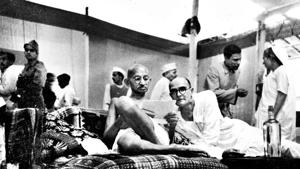
Updated on Oct 01, 2023 08:43 PM IST
Hindustan Times | Nachiketa Desai
Birla House: A visit to the Mahatma
Formerly the house of noted industrialist Ghanshyam Das Birla, the home where MK Gandhi spent his last 144 days is now a museum

Updated on Oct 01, 2020 08:00 PM IST
Hindustan Times, New Delhi | Dhrubo Jyoti
‘I kept feeling that Bapu would wake up any minute’: Tara Gandhi Bhattacharjee
Tara Gandhi Bhattacharjee spoke about her father’s stint in Hindustan Times, her grandparents, and the changing face of Delhi

Updated on Oct 01, 2023 09:00 PM IST
Hindustan Times, New Delhi | KumKum Dasgupta
Hindustan Times and the Mahatma
When Gandhi inaugurated the Hindustan Times press in 1924, he knew it was time for a paper that reflected sentiments and the shared national agenda of Indians
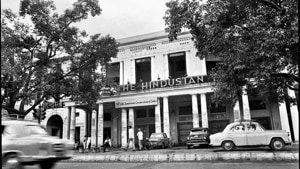
Updated on Oct 01, 2023 09:03 PM IST
Hindustan Times | Dhamini Ratnam
Gandhiji’s name etched in the history of independent India, writes Mohan Bhagwat
Mahatma Gandhi 150th Birth Anniversary: MK Gandhi stood for social equality and harmony, and translated his vision into action. We must perceive, understand and manifest this in our lives.
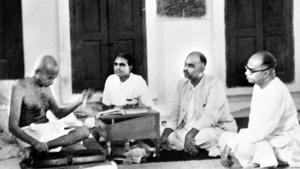
Updated on Oct 01, 2020 08:02 PM IST
Hindustan Times | Mohan Bhagwat
Essential reading on MK Gandhi
Swami Anand, who persistently urged Gandhi to write his autobiography, introduced the readers to sociological insights about castes and communities
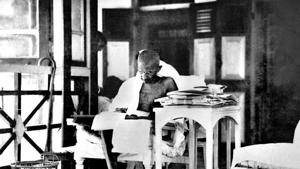
Updated on Oct 01, 2023 09:33 PM IST
Hindustan Times | Tridip Suhrud
A biographer’s journey: In search of the Mahatma
The Collected Works had all the known letters that Gandhi himself wrote; but virtually none of the letters that he received or responded to.
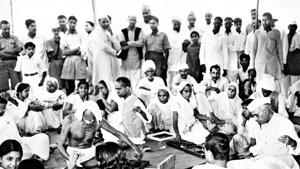
Updated on Oct 01, 2023 08:47 PM IST
Hindustan Times | Ramachandra Guha
Gandhi and Gujarat: At home and in self-imposed exile
The state was his birthplace and the site of his experiments with truth. But it must analyse its points of divergence from the Father of the Nation
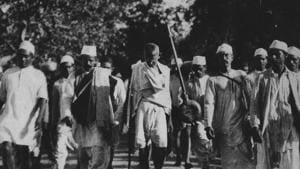
Updated on Oct 01, 2023 08:37 PM IST
Hindustan Times, New Delhi | Tridip Suhrud
Gandhi, Ambedkar and the 1932 Poona Pact
The 1931 Poona Pact shaped India’s Dalit political representation, and its implications are felt even in today’s parliamentary elections
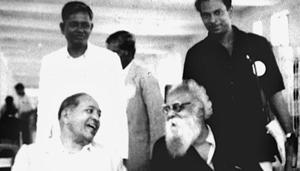
Updated on Oct 01, 2023 08:52 PM IST
Hindustan Times, New Delhi | Dhrubo Jyoti
A hyperlocal economic plan
The political consensus was that a newly independent India needed to rapidly industrialise. Instead, Mahatma Gandhi offered a radically different economic path

Updated on Oct 01, 2023 08:36 PM IST
Hindustan Times, New Delhi | Niranjan Rajadhyaksha
An experiment in Khadi, and Gandhi’s eastern base
History hangs thick in the air of the Gandhi ashram, as the place is known. A print of a letter written by Gandhi in 1928 adorns the wall next to the bed

Updated on Oct 01, 2023 09:40 PM IST
Hindustan Times | Snigdhendu Bhattacharya
An archival treasure on Gandhi
Bolstered by his experience of ashram life in South Africa, Gandhi first set up an ashram in the Kochrab area of Ahmedabad, which he later shifted to its present site on the banks of the river Sabarmati.

Updated on Sep 30, 2019 01:09 PM IST
Hindustan Times | Paramita Ghosh
Champaran satyagraha turned into social reform
Gandhi established an ashram-school on land donated by a local priest, Baba Ram Narayan Das, which opened on November 20, 1917, a week after establishing a similar foundation school in Barharwa Lakhansen village 135 km away.
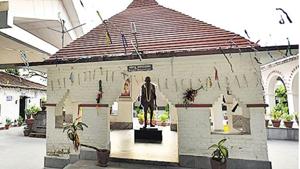
Updated on Sep 30, 2019 01:06 PM IST
Hindustan Times | Neyaz Farooquee
1915-16: A tour of the homeland
Gandhi was advised by his mentor Gopalkrishna Gokhale — a freedom fighter who belonged to the ilk of Moderates within the Congress — to tour India for a year
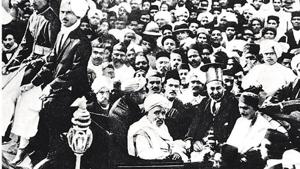
Updated on Oct 01, 2023 09:11 PM IST
Hindustan Times | Dhamini Ratnam
Growing up in Mahatma Gandhi’s Sevagram Ashram
In 1936, Gandhi decided to personally live and work in villages. He wanted to redirect the educated class in India towards villages.

Updated on Oct 01, 2023 09:19 PM IST
Hindustan Times | Abhay Bang
The five Gandhis
One of the ways in which the Dravidian social reformer challenged Brahmanical domination in politics, education and administration in Tamil Nadu was to agitate against caste surnames.

Updated on Sep 30, 2019 01:11 PM IST
Hindustan Times | Snigdha Poonam
The Gandhian who brought the charkha to Nepal
Shrestha was born in Kathmandu in 1896. From an early age, he showed signs of being a social reformer. He became one of the leaders of the Satyacharan Malami Guthi that worked to end outdated death related rites and rituals in Nepal.
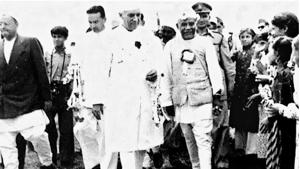
Updated on Nov 04, 2019 02:00 PM IST
Hindustan Times | Manjeev Singh Puri
Can Gandhi and Mao ever meet?
Gandhi, an apostle of non violence, and Mao, an unapologetic votary of armed revolution or people’s war. Gandhi, an ascetic who renunciated all state power, and Mao, the Great Helmsman, who exercised all power for 26 years.

Updated on Oct 01, 2020 06:26 PM IST
Hindustan Times | Baburam Bhattarai
Gandhi on trial in South Africa, again
The motion called for the removal of the bronze statue at Gandhi Square — sculpted by Tinka Christopher, it depicts Gandhi as a young activist lawyer in his legal gown — and the renaming of the site after Sophie de Bruyn, a well-known anti-apartheid activist.

Updated on Oct 01, 2020 06:21 PM IST
Hindustan Times | Eric Itzkin
Learning to become a political activist
The debate on social media often ignores the changes Mahatma Gandhi went through in subsequent years when he sought to travel third class in trains

Updated on Oct 01, 2023 08:42 PM IST
Hindustan Times | Uma Dhupelia Mesthrie
Gandhi Jayanti: The importance of constructive work
Gandhi was unique among anti-colonial leaders for his attention to both politics and social transformation.
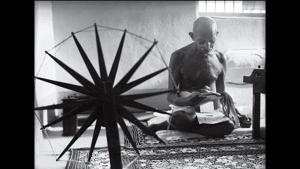
Updated on Oct 01, 2020 06:49 PM IST
Venu Madhav Govindu
The Mahatma’s Bengal connection
Bengalis have a complicated response to MK Gandhi. Some hold him responsible for the Partition; others question his treatment of Subhas Chandra Bose.

Updated on Oct 01, 2023 09:43 PM IST
Gandhi’s four visits to Assam
Travelogue: The Mahatma sought to learn the state’s history. He also imparted lessons on political maturity.
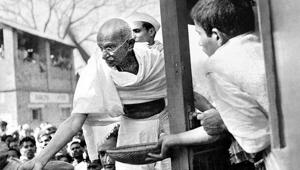
Updated on Sep 27, 2019 11:07 PM IST
Arupjyoti Saikia
A lesson in swaraj from informal women workers
Inspired by Gandhi and his ideas of swaraj, thousands of women have created small, medium and large membership-based organisations.
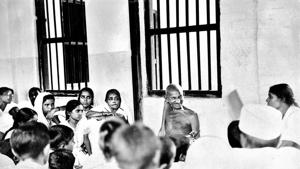
Updated on Oct 01, 2020 06:30 PM IST
Mirai Chatterjee
Many Gandhis on our screens
One of the earliest films on Gandhi was an American feature documentary, titled Mahatma Gandhi: 20th Century Prophet, made in 1953.

Updated on Oct 01, 2020 06:53 PM IST
Hindustan Times | Ratnottama Sengupta
A young woman who played an aging Kasturba
Rohini Hattangadi played the character of Kasturba Gandhi in Richard Attenborough’s legendary 1982 film, Gandhi. Hattangadi revisits her memories of working in this iconic cinematic adaptation of his life.

Updated on Oct 01, 2020 07:06 PM IST
Hindustan Times | Sonal Kalra
Champaran: India’s first Satyagraha
Mahatma Gandhi’s swaraj meant self-sufficiency at the village level, dependent largely on agriculture
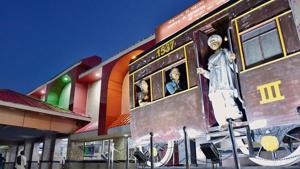
Updated on Oct 01, 2023 08:57 PM IST
Neyaz Farooquee
A novel form of political protest
Mohandas Karamchand Gandhi widened the meaning of satyagraha to indicate an ethical attitude to the business of life. He even set the criteria for self evaluation for those who wished to follow this path. But the Mahatma’s true genius lay in the way he projected values like truth and non violence to the realm of mass politics.
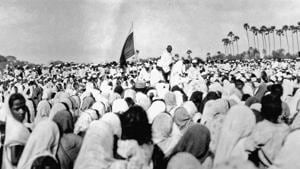
Updated on Sep 27, 2019 05:54 AM IST
Venu Madhav Govindu
Gandhi’s Bombay days in Mumbai
Bombay was where Gandhi made public speeches at mill compounds, where the supporters included elite families, shopkeepers, women and students.

Updated on Sep 22, 2019 08:11 AM IST
A winning combination
An indefatigable Gandhi. A generous Bombay. Together, they created a synergy that changed the course of history, for it is here that the first nationwide Non Cooperation, and Quit India movements were launched.
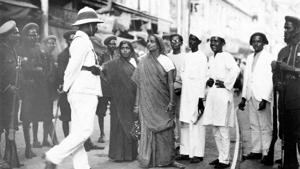
Published on Sep 22, 2019 01:44 AM IST
Usha Thakkar and Sandhya Mehta
- 1
- 2
- ...





